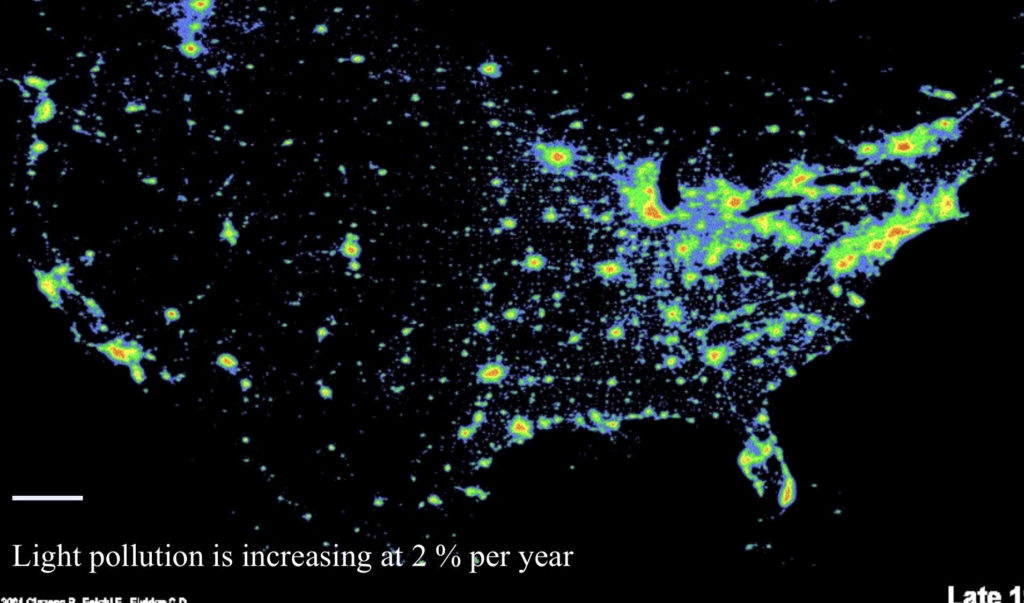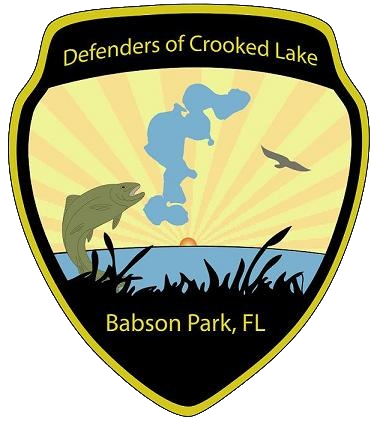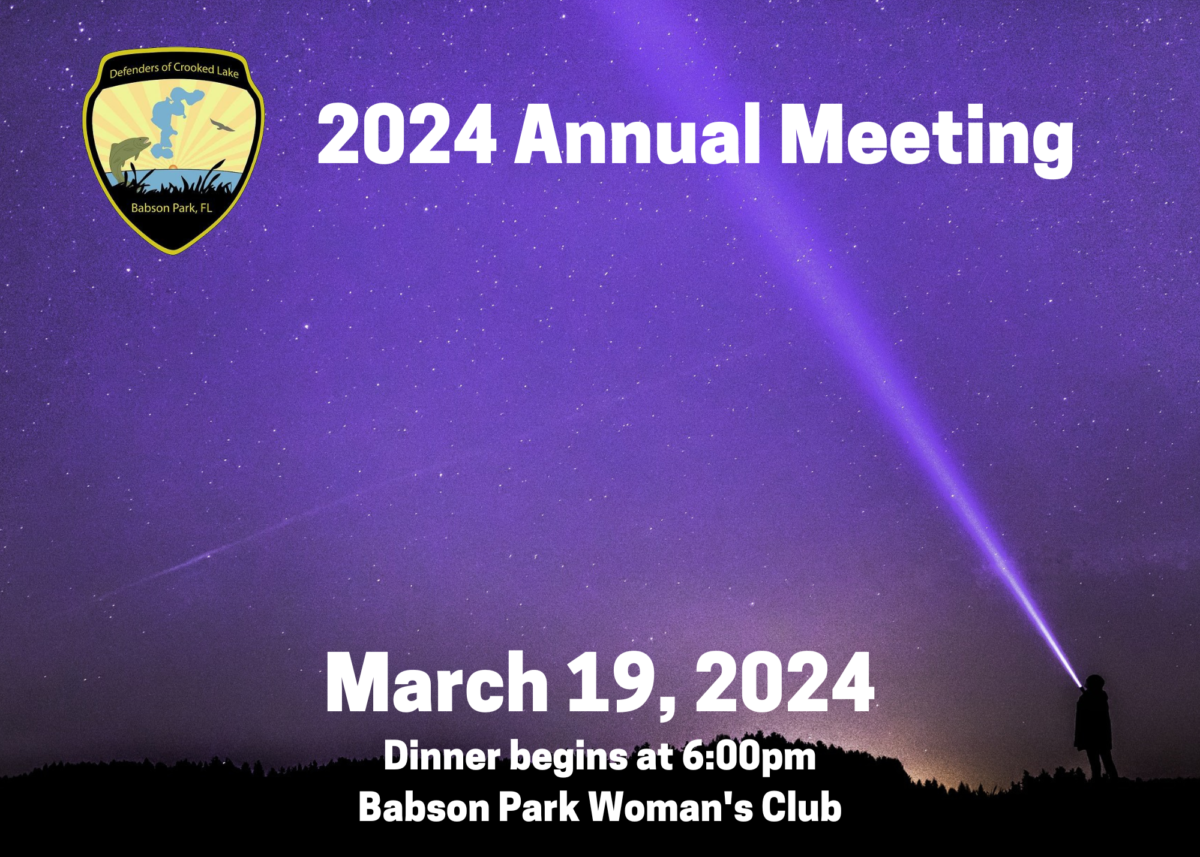By Win Stevens
For those of you who were unable to attend our March dinner meeting and those interested in a review, here is a brief summary of what we learned about light pollution and its impacts on our lives. Our speaker was Marty Proctor. He is a conservation activist, DarkSky advocate and electrical engineer who spent most of his career working with LED lighting and now works to help people understand the negative impact of excessive night lighting, especially that generated by LED.
All plants and animals depend on the earth’s light/dark cycle for many daily and seasonal activities. Alterations in that cycle can have negative, even deadly consequences. Migrating birds, birds and mammals that hunt at night, insects (especially night pollinators), trees, plants, crops, animal reproduction cycles, and human health are all directly influenced by increased artificial light. For us humans that light negatively affects our health by increasing the risk for sleep disorders, diabetes, depression, certain cancers and more.

Three lighting problems affect humans on a daily basis: sky glow causing visual loss of the night sky, glare, and light trespass (light negatively affecting neighbors). All of these are worsened by the increased use of outdoor lights and especially by the proliferation of LED lights. And unfortunately most of this light is wasted and costly. There is a myth that more lighting makes you safer. The reality is that well-designed, properly-used lighting is safer because of the reduction of glare that interferes with your ability to see what’s nearby. Down lighting that directs the light where it’s needed is more efficient and greatly reduces all three of these issues. Also using a warmer light on the Kelvin scale (2500K-3000K) and timers on outdoor lights helps tremendously.
We’re pretty lucky that we live on Crooked Lake, but we all know that population density is increasing. And with increased numbers comes increasing light through street lights and security lights. And of course we’re all aware of the stadium light issues. Polk County does have an ordinance (21-015) pertaining to improved street and parking lot lighting for new developments, but it is vague and doesn’t cover other structures.
So what can we do? Look around your house or business. Are your outdoor lights shining into your neighbors’ windows? Is the glare casting shadows that could conceal danger? Are your lights shielded to direct the light where it needs to go? Can you use a timer on those lights? No one is suggesting that we all rush out and change all of our outdoor lights, but when you do need to change one, think about getting DarkSky-approved fixtures. Every little bit helps. Please check out DarkSky.org for more information, and let’s do our part to live in a place where we can still see the night sky.


Thanks to all that attended the annual meeting. Photos from the event are below.









